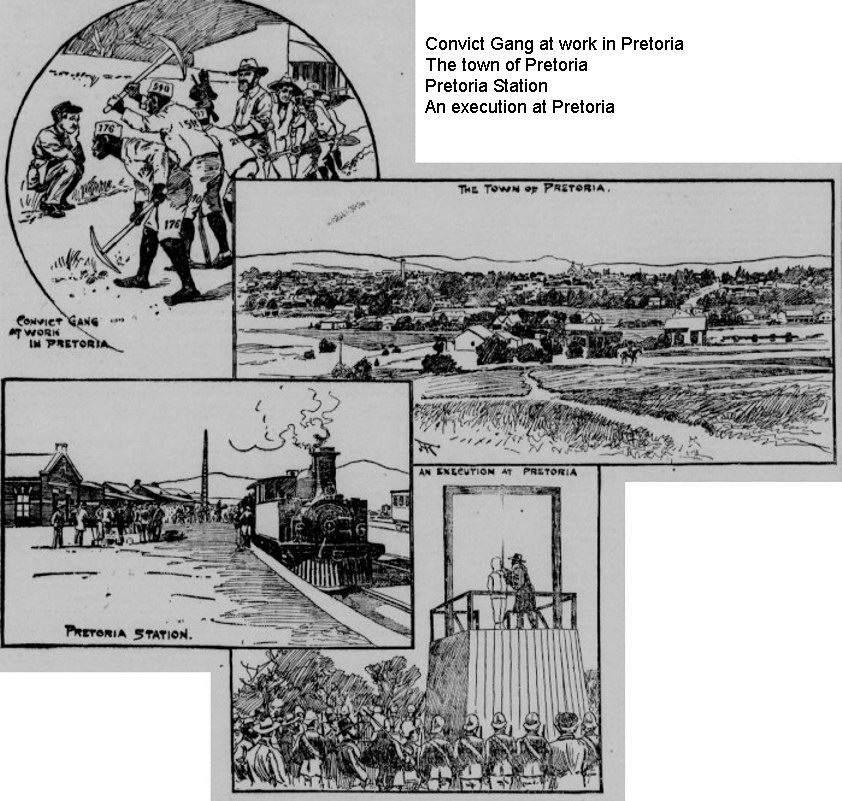Life in the Boer Capital Pretoria(1899)

Life in the Boer Capital
THOUGH Pretoria, the capital of the South African Republic, is a town of leas than 10,000 inhabitants, it is at present one of the most important places on the map of Africa.
The town was named in honour of the first president of the Transvaal, Pretorius, who led the migrating Dutchmen in their great trek from Cape Colony 60 years ago.
In 1889 the parliament house of tho republic at Pretoria was a little thatched barn, but on the site of that barn now stands one of the handsomest
and costliest buildings in South Africa. In this connection there seems to be a general idea that Pretoria is a raw and unpleasing frontier town, with all the objectionable features
of the Boer embodied in its buildings and general layout.
Such is very far from the truth, thanks to the energetic and progressive uitlanders who have settled here and done much to beautify the place. As one approaches Pretoria
across the low and flat and monotonous veldt welcome trees change the character of the scenery, and in a pleasant valley, kept green by springs of clear water which ripple in little
runnels down the sides of every roadway, nestles the capital of the South African Republic. It is a town of trees and hedges and flowers.
It has wide avenues and good buildings and can boast of the modernity of electric lights.
A common sight in the streets of Pretoria is a gang of convicts engaged in roadmaking. The prisoners are always guarded by a white warder, armed with a revolver, and a
black constable bearing a rifle. Some of these prisoners are white, but most of them are obstreperous blacks undergoing punishment for their sins of the past.
The white prisoners are well clothed, wearing good felt hats and flannel shirts. They are not forced, like the black prisoners, to wear
convict dress marked with a conspicuous number, nor are their heads shaved close like the blacks.
Public executions are a very common occurrence In Pretoria and do not seem to arouse the slightest excitement among the citizens. Since It is a crime punishable
by death for a black to deal in illicit liquor, many a poor black is strung up for getting mixed up in the making of native "moonshine whisky." The public gallows stand in the garden
of the city jail and the state artillery attends all executions. There is no official executioner, the execution ceremony being performed by prisoners of good behavior, who thus earn
their liberty and are put across the border.
There is a custom at these Pretoria executions for the officiating black to wear a pair of white gloves, and, after the fatal drop, these gloves are thrown into
the pit below, to signify that, the hands of the person superintending the affair are clean of all blood.
The greatest drawback about Pretoria, as is the case with the rest of the Transvaal, is its railway connection. South African railways are the slowest in the world.
The Boer is not a fast traveling man, and he will not allow others to travel fast while within his gates. To travel 220 miles in two days is ,not a very remarkable record
from the American standpoint. Yet such a run is a thing to wonder at when it occurs in the Transvaal. But it is only the mail trains that travel at such a reckless rate of speed,
since the freight trains going the same distance do the trip in five days.
Most Boers, one is not surprised to find, make their wills before going on a railway journey, for the ordinary Transvaal engine leaves the track about once an hour. In fact,
among railway men on the notorious Beira railway there is a tradition that in the early days the best driver on that line performed the remarkable feat of traveling the whole
length of the line and ran his train off the metals only 23 times.
Los Angeles Herald, 30 October 1899